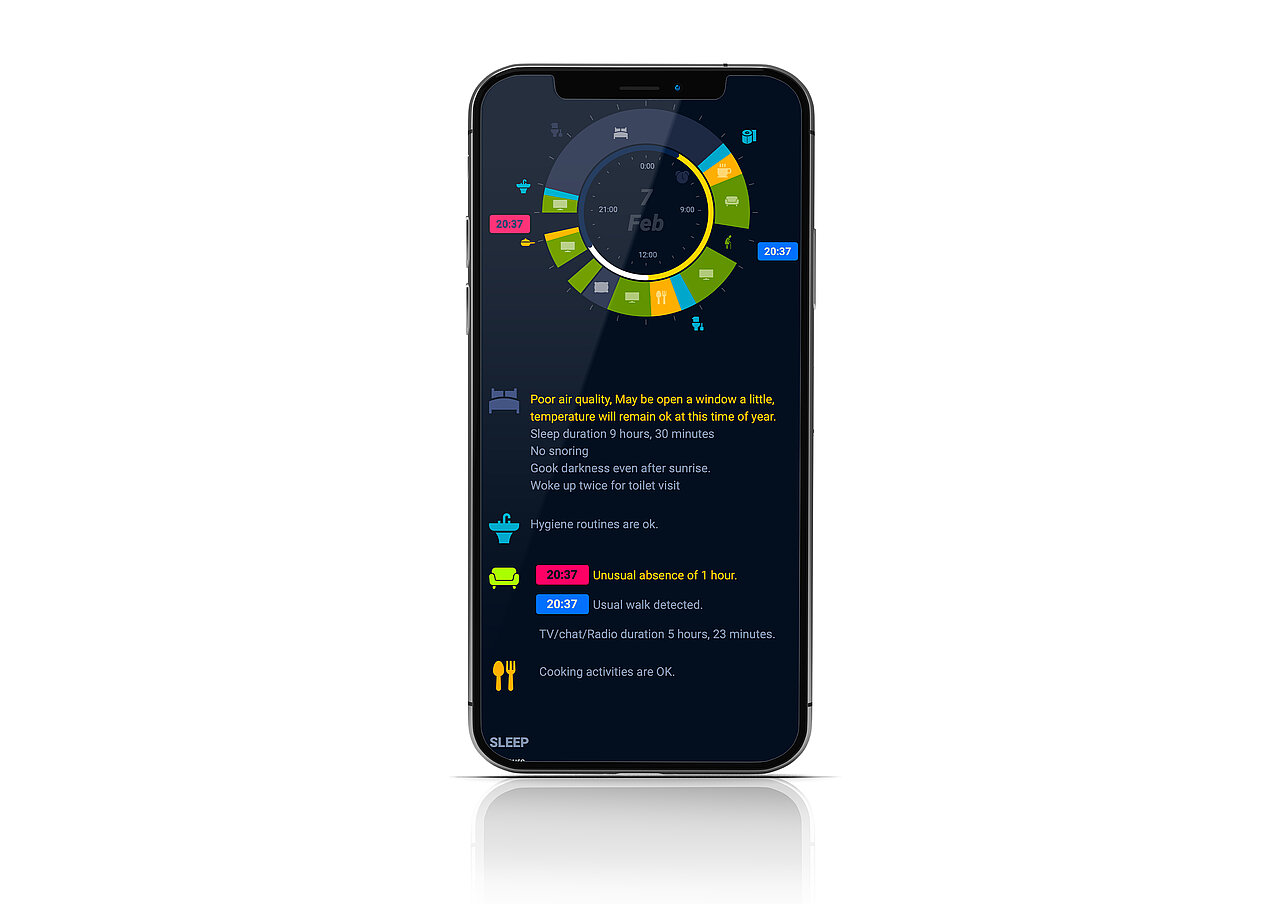Humans prevail. Not technology.
Healthcare helpers first. Artificial intelligence and sensors are here to help.
We are a group of French and Hong Kong engineers. The photos on this page are taken from homes were our sensors monitor the household dwellers. We know them, and we are happy to share these real-life snapshots with you.
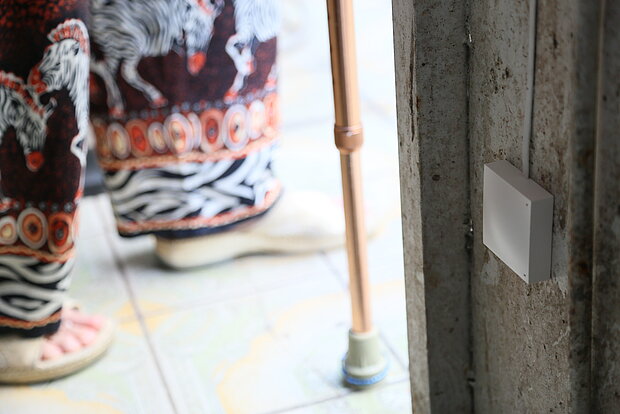
Rethinking homecare.
When we think of technology for elderly care, the first thought that comes to mind is detecting falls. When people fall, it is often too late to intervene.
Taking care of our parents and grand-parents means of course responding to emergencies. However, the real care consists of paying attention to all their daily need, such as changing a light bulb, renewing a TV subscription or perceiving that a new hand grip is needed in the bathtub.
No one likes to be in need of help. Privacy and dignity make us conceal these new issues that alter our daily life. We’d like to ask our elders of their needs without being inquisitive. We’d like to know when care must be provided even if our helping hand has not necessarily been called for.
This is what we do.
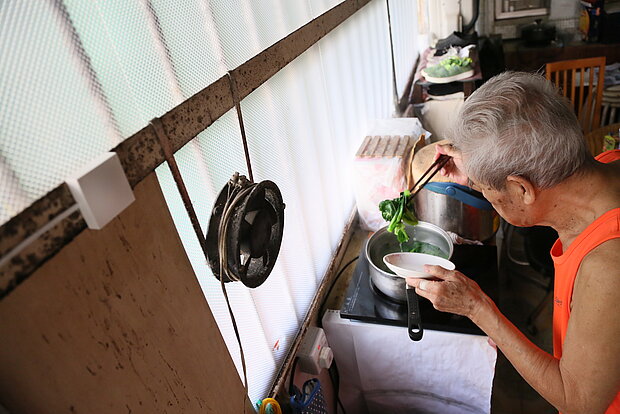
From real life.
We are helping many institutions and single elderly households and have thousands of anecdotes from daily life. All are unique, but all tell the same story. They tell the story of little snags that turn into huge problems.
In one case for example, we have prevented hospitalisation for intestinal perforation by detecting much more frequent toilets visits without bowel movements. This was in fact a close call. It began with Covid confinement and a change of cooking/eating habits. Toilets trips became erratic going from none at all to once every hour. Our A.I. detected all these changes. The tactful intervention of the healthcare worker avoided a real emergency, negotiating the embarrassing and decency limits of the situation.
Humans prevail, not the technology. This is why we have designed our system to be as discreet and private as possible.
We are an additional source for your healthcare team, making sure that subtle changes do not go unattended in the haste of daily care.
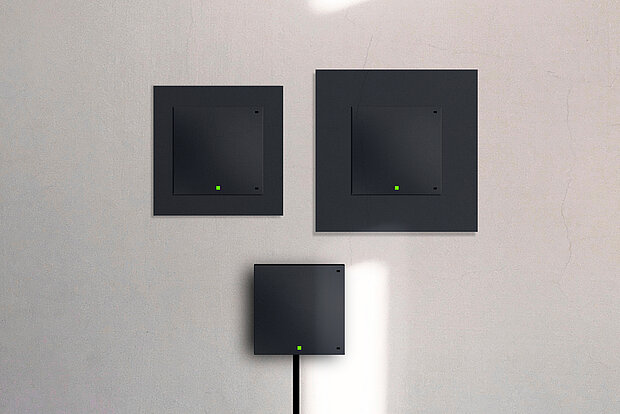
No magic. Just hard work.
Our systems are accurate in detecting the glitches of life habits in total privacy. No camera, no microphone. Artificial intelligence is there to provide a decent distance for our kind-hearted questioning.
Harbingers of incontinence.
Needs for bathroom adaptations.
Failing appliances.
Regular and irregular visits.
Sleep apnea and heavy snoring.
Sleep bed mobility.
Sleep cycles, insomnia.
Unusual absences as signs of dementia.
Cooking habits and lack thereof.
CO2 concentration against virus spreads .
Damaged heating equipment.
Falls.
TV watching habits.
Hygiene routines, shower and bath.
Toilet usage and regular bowel movements.
Healthcare interventions regularity.
Well-being estimators.
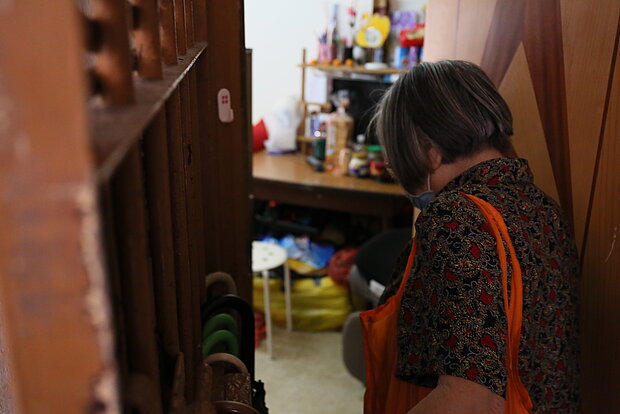
Intimacy.
Our sensors are designed to respect privacy. We do no use cameras or microphones. There is no way to record voices or view nudity.
We use encryption and data transmission standards similar to those used for banking and credit cards.
But the ultimate privacy measure is treating our data locally. We do not need a cloud to process raw data. Only aggregated information leaves the household. Raw data are is deleted after a few weeks.
This represents a large amount of data processed locally by our A.I. If you do not want data to be wandering in a cloud, you can keep it at home.
Our engineers are experts in optimising data processing, as those of the car or aeronautic industries. We do not believe in Big Brother systems but rather in local storage, not bigger than a circuit breaker in an electrical cabinet.
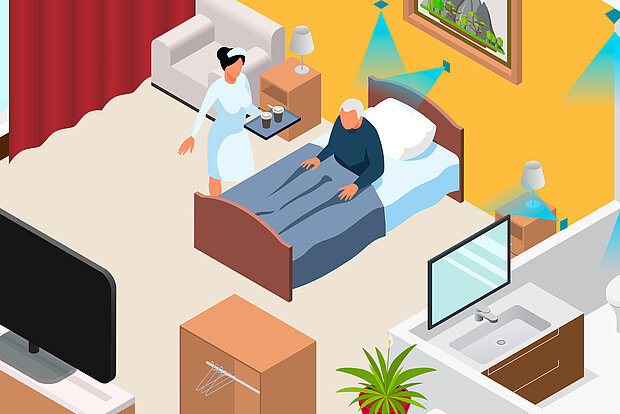
In practice.
Sensors are installed in front of the area where activities need to be detected.
A single sensor is enough to cover a 5 by 5-meter room. They can be placed on walls, ceilings and corners.
Sensors exist in socket form for permanent installations. They are as simple to install as power sockets or switches. A low power option is available for wet/humid environments.
Ideally, in a room with several beds, they should be installed at the bed head level. Placed close the guest will help the A.I. detect the source of events.
For a single room, placing the sensor is more flexible.
As for the bathroom, safety norms will most of the time lead to a ceiling installation. The Heatmap32 should be installed in a corner in view of the whole room for detecting any falls. The best placement for the Ambient 16 is over the toilet seat, but any placement is totally suitable in a small bathroom.
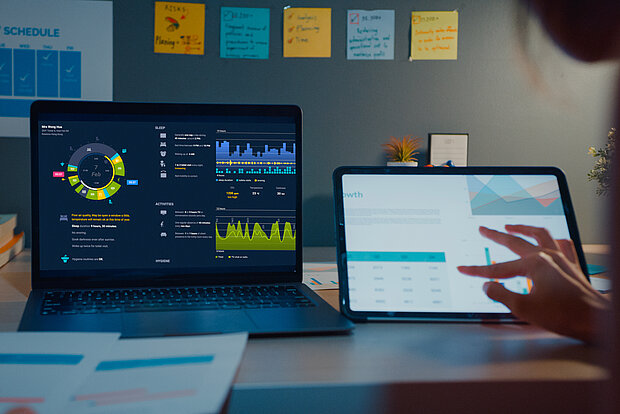
User friendly.
Our mobile sensors are easily installed within minutes in any household. They connect to the local or 3G network. Our App aids the helpers in monitoring exactly the person’s habits.
As healthcare workers, you will never have to deal with complex mathematical analyses. We provide all the insights on a user-friendly dashboard with simple charts, that are easy to understand.
We offer an App for getting the latest insights on a person at home. We have more extensive dashboards for nursing offices.
Only a standard size PC is required for establishments with a capacity of 500 beds. We compress data transmission as much as possible and, as a result, our sensors will not burden your WiFi infrastructure. All transmissions are securely encrypted and no hacking is possible.
